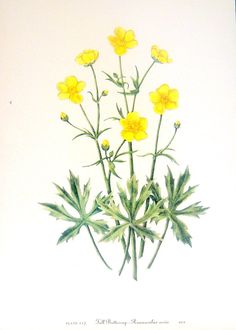
#BUTTERCUP FLOWER DIAGRAM SERIES#
Buttercups in the ‘Elegance’ series are known to have broader and fuller flowers than traditional Persian buttercups. The flowers are born atop sturdy stems and typically last about six weeks. Buttercups in this series produces lots of different colors, including ‘Elegance Orange,’ ‘Elegance Red,’ ‘Elegance Clementine,’ ‘Elegance Rose Chiaro,’ and ‘Elegance White’ among many others. Ranunculus’ Elegance’ SeriesĪnother famed Italian ranunculus series is the ‘Elegance’ Persian buttercup flowers. Fully matured plants reach up to 25 to 30 cm in height. The ‘Tomer Picotee’ variety of Persian buttercups is a compact plant that displays rose-like, large flowers with multiple layers of delicate white, purple-tipped petals. It only means that the bulbs are cloned in a laboratory. Flowering occurs early to mid-summer in colder areas or in early to mid-spring in mild climates when planted in fall.Īnother interesting detail about this Italian ranunculus is that its bulbs are propagated in vitro. This buttercup flower variety grows about 30 to 60 cm in height when fully matured. The layers of paper-thin petals open up fully and reveal the bloom’s inner green eye at the center. Another top favorite cut flower by many florists, it frequents wedding bouquets and arrangements with its soft hues of pink and white. Ranunculus’ Hanoi’ or also known as Ranunculus asiaticus’ Cloni Success Hanoi’ is a buttercup variety that originated in Italy.

The ‘Bloomingdale’ series produces eight beautiful, vibrant colors, including yellow, red, pink, orange, gold, purple, and white. It originates from Southeastern Europe to Southwestern Asia (3).
#BUTTERCUP FLOWER DIAGRAM FULL#
This variety of ranunculus grows about 20 to 25 cm with full bloom flowers measuring about 10 cm in diameter. One of the most well-received cultivars of Ranunculus asiaticus is known as ‘Bloomingdale.’ A classic and florist-favorite, it flaunts large and dense double-formed blooms that look like small peonies that bloom in spring. Recommended Buttercup Flower Cultivars Ranunculus’ Bloomingdale’ Series The cluster of foliage grows up to 12 inches tall. Ranunculus leaves, which are finely-cut and parsley-like, are compound and arranged alternately. Stems generally are 12 to 18 inches each. Ranunculus plants produce flowers that can be single-form, double-form, or frilled, typically measuring about 3 to 6 inches wide. The blooming season typically occurs in spring and mid-summer (1). They are likewise great additions in home gardens. These herbaceous perennials, which are known best for their paper-thin, rose-like petals, make long-lasting cut flowers. Ranunculus flowers sure add beauty and vibrancy in any garden. Persian buttercups typically grow about 1 to 2 ft in height and spread up to 2 ft upon full maturity. asiaticus or Persian buttercups are the most common Ranunculus species for gardening, this section mainly focuses on this plant’s characteristics. Persian Buttercups: General Description and Characteristics

Listed below are the most common ornamental plants that work well with ranunculus blooms in a garden: They are great cool-season flowering plants for beddings, borders, and even in pots or container gardens. Persian buttercup flowers offer a plethora of color options, ranging from white to red, purple, pink, orange, cream, and bright yellow flowers. Garden and Landscape UsesĪlthough the Ranunculus genus comprises a broad list of species, only one of them is popularly cultivated both for home and commercial gardens – the Ranunculus asiaticus or Persian buttercups.
#BUTTERCUP FLOWER DIAGRAM SKIN#
Most species in the Ranunculus genus are used in traditional medicine, particularly against rheumatism, intermittent fever, and redness of the skin (2). Benefits and Uses of Ranunculus Flowers Medicinal Uses Native buttercup flowers grow abundantly along water streams, which are comparable to little frogs hence the name. The genus name ranunculus is based on two Latin words, rana and unculus, that collectively mean “little frogs.” While most flowers obtain their name based on their appearances or unique features, buttercup flowers have a different yet interesting name origin. Other common names of ranunculus include Coyote’s eyes, water crowfoots, meadow buttercup, and spearworts. The huge genus, which contains over 600 species, is native to the United States of America and Eurasia (1).


What does the buttercup flower symbolize?.Common Questions About Ranunculus Flowers.Growing Ranunculus: Culture, Care, and Maintenance.Persian Buttercups: General Description and Characteristics.Benefits and Uses of Ranunculus Flowers.


 0 kommentar(er)
0 kommentar(er)
